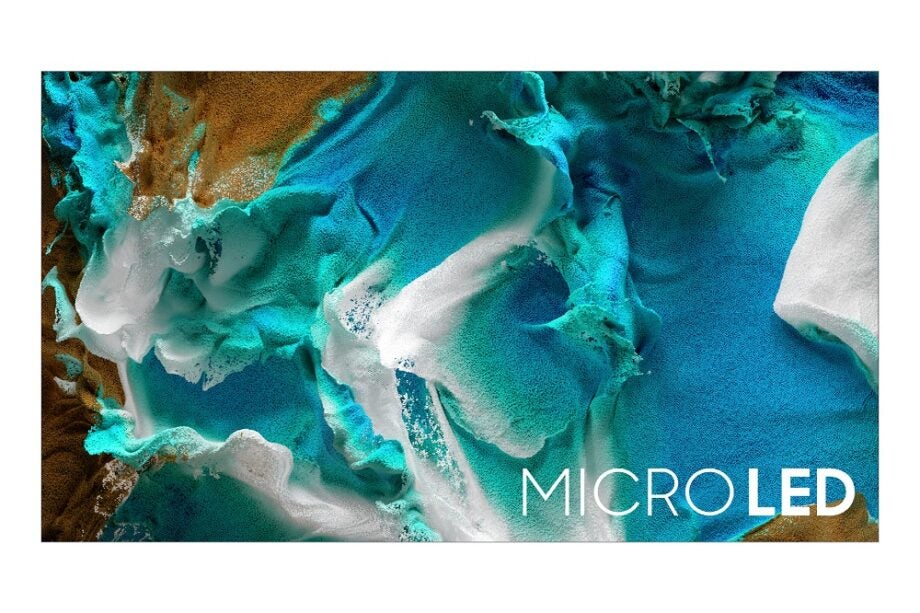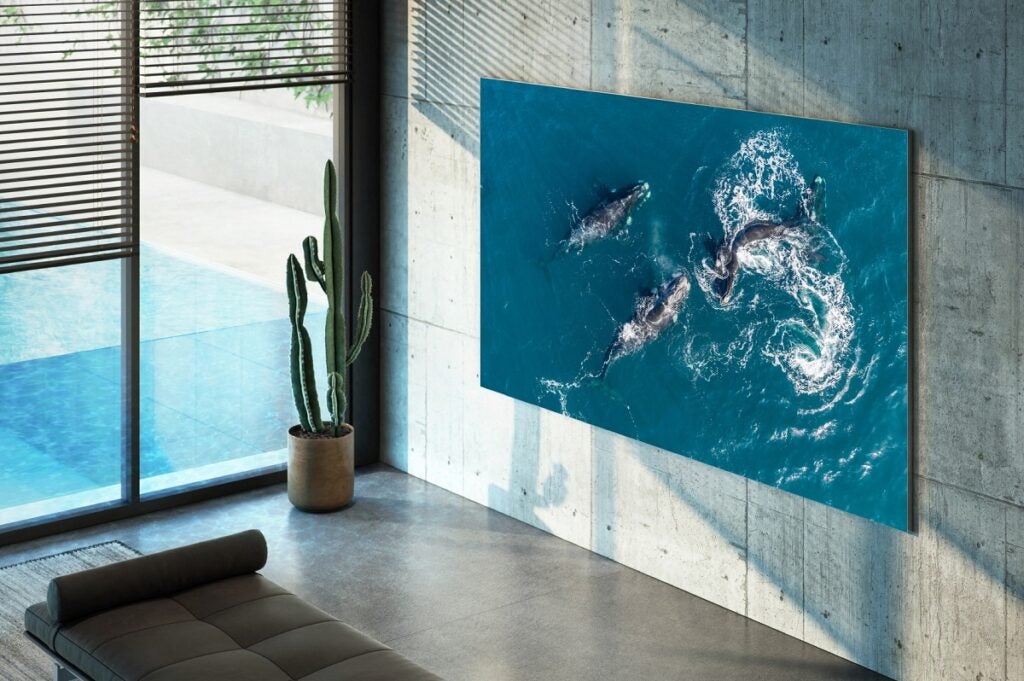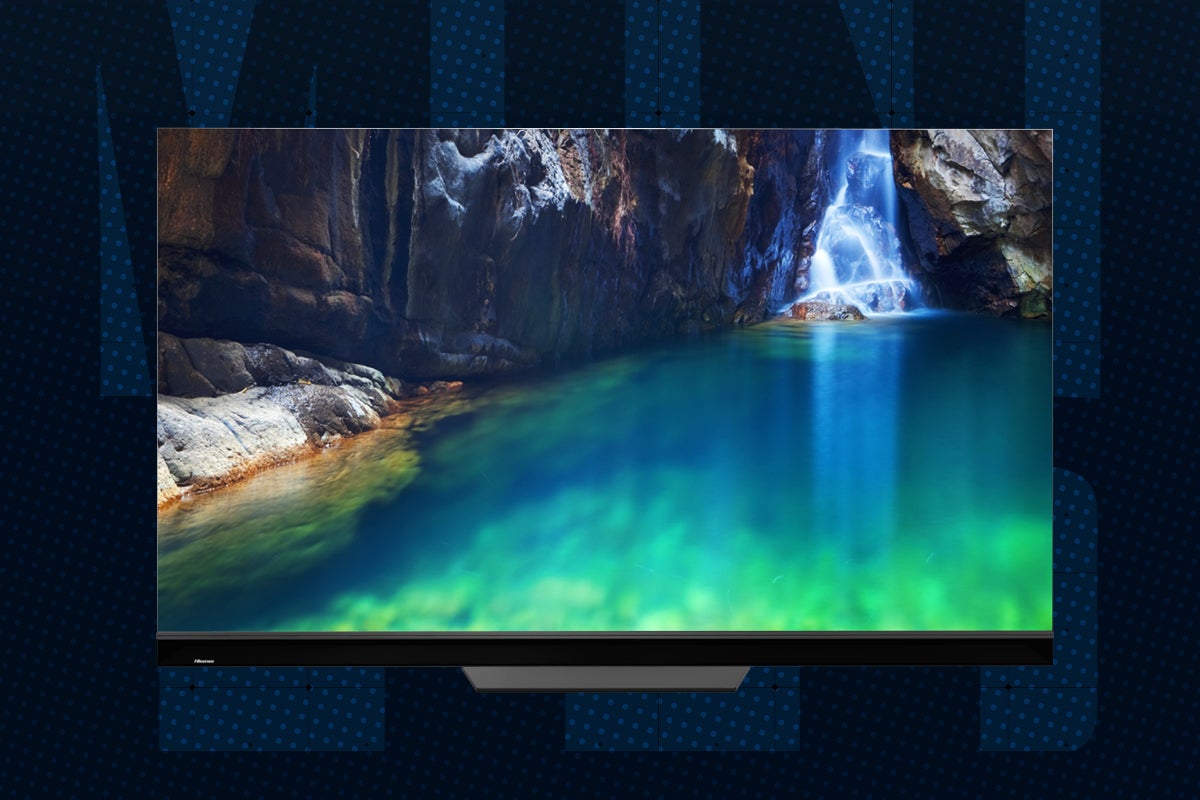Micro LED: Everything you need to know about the display tech

In the battle for consumers’ engagement, the TV industry has thrown out lots of acronyms and new technology such as Mini LED, QD-OLED, and the subject of this explainer, Micro LED.
Micro LED is not to be confused with Mini LED though they sound as if they should be the same. What Micro LED purports to do is offer all the benefits of OLED without encountering the same issues with brightness and image retention.
So what exactly is Micro LED? Here’s everything you need to know.
What is Micro LED?
We agree, the name can seem confusing at first, especially when it comes to TVs.
It’s a relatively new type of display panel and unlike LCD TVs that feature a separate LED backlight, a Micro LED combines them.
Micro LED screens are made up of micrometre-sized LED lights, so when you’re looking at a pixel, you’re actually looking at a cluster of three LEDs that are producing each pinprick of detail.
And because the light is generated by the pixels themselves, they’re able to turn off entirely to create a so-called “perfect” black, which means that the overall image has a far greater sense of vibrancy and depth.

It’s similar in many ways to what OLED panels can do, and it means that Micro LED offers vibrant images with great viewing angles.
However, OLED TVs haven’t yet been able to match their LCD counterparts for brightness (though that is beginning to change with flagship OLED screens). In general, HDR pictures don’t reach the same peak brightness, and that gives Micro LED the advantage in terms of colour volume (accurately representing colour at different brightness levels) and punchiness.
What are the benefits and negatives of Micro LED?
We’ve already talked about how, like OLED, a Micro LED is self-illuminating that can produce perfect blacks. Micro LED uses non-organic elements for its screen unlike OLED, and this allows it to push brightness further, hit even better levels of contrast for a more natural and realistic image and allow it to have a longer lifespan than OLED screens.
Another benefit is that it can be modular. While traditional TVs are made to a bespoke size that can’t be altered, Micro LED TVs can be made up of a number of smaller panels that attach together to form a bigger screen like a Destructicon from Transformers.
You could, for example, buy a couple of modules to make a smaller TV, and then add more if you move into a bigger house with more space for a TV. Samsung has even indicated that you could use modules to build a Micro LED TV that has a completely different aspect ratio to your average TV.
Response times are quick, and wide angle viewing is said to be impressive, offering bright and colourful pictures at whichever angle you’re facing the screen. Based on this, you’d think that Micro LED should be the only TV to get, given how well it scores at all the attributes that make a good TV.

But Micro LED has its own problems. For one thing, getting LEDs that small to reach the right brightness levels is proving to be quite a challenge, considering the complexity of the panel structure.
The first Micro LED TVs were available in gigantic sizes: 110- and 99-inches which means you’ll need a fair bit of space to take any delight in your brand-new Micro LED TV. They also need to be installed by a professional, though Samsung did announce that a 76-inch model did not require professional installation.
The biggest advantages of this modularity are likely to be felt by manufacturers, who’ll be able to produce one panel for all of their different TV sizes and then assemble them as required, rather than having to produce endless varieties of different panels.
Samsung did announce more prefabricated (i.e. pre-built) sizes such as a 50-, 63-, 89-, 101-, 114- and 140-inch models for 2023 alongside the 76-inch screen. However little is actually known about this models, and despite the announcement by Samsung, there are still no concrete details around availability and price for the new models, though you can presume they won’t be cheap as the 89-inch was priced around $80,000 for its 2022 release.
Can it be used for other purposes?
The screen technology has been earmarked for other products. Years ago it was mentioned that Apple were investigating Micro LED panels, though this was first mooted for the Apple Watch all the way back in 2018. If it does arrive, it’s not expected until 2025 at the earliest.
It’s not just smartwatches that could receive the display tech. It could also be integrated into iPhones, although we shouldn’t expect to see this for a number of years yet.
It’s also rumoured to be in development for VR headsets with their higher pixel densities and faster response times, though again there’s no timescale for when this could be introduced.








